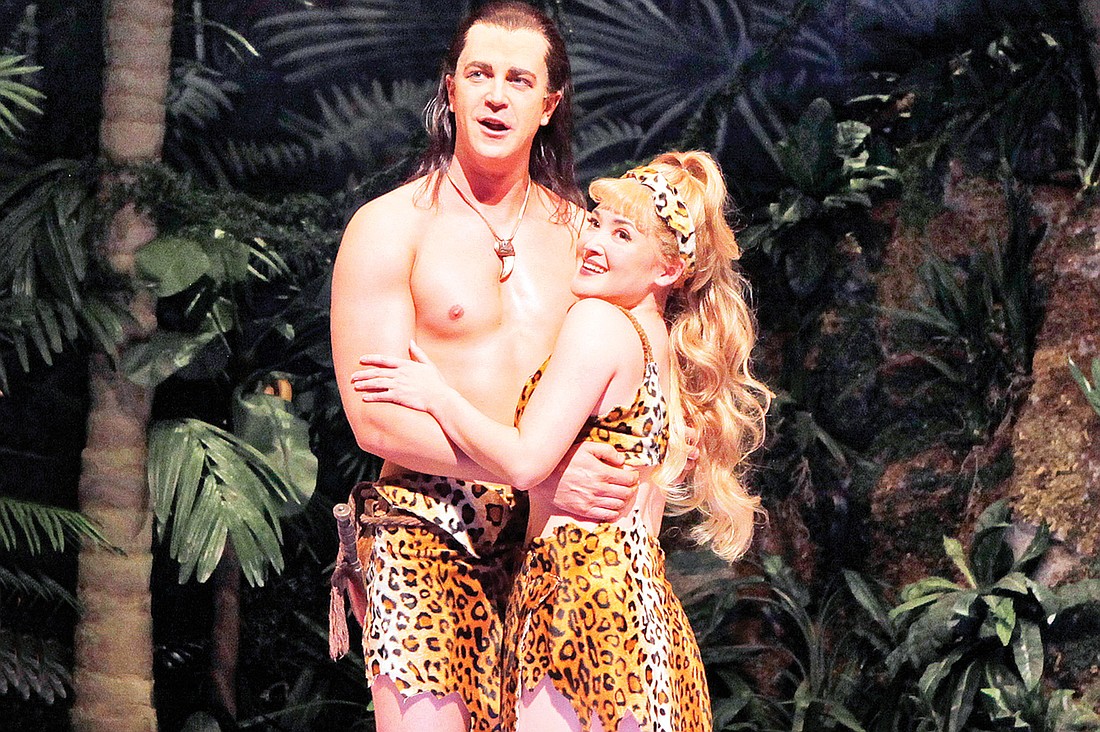- November 28, 2024
-
-
Loading

Loading

We seemed to spend our summer holiday in the footsteps of dozens of Sarasota Orchestra musicians. Everywhere we turned, there was a Sarasota player, especially in Santa Fe, N.M., where our own Daniel Jordan was on a busman’s holiday playing assistant principal second violin, surrounded by many of his peers, including his beautiful wife, Chung-Yon (“C.Y.”) Hong. In fact, Jordan and Hong were married this summer, and one of their many celebrations took place in Santa Fe. But that’s another story.
This narrative is about the music we heard along the way. Santa Fe is so opera-centric, it even has a major thoroughfare called Opera Drive. And the opera house is — forgive me, Mr. Puccini — as spectacular as the music. The audience sits under a vast roof leading to the stage with all four sides of the “house” open, so, as the overture begins, the moon crests over the mountains to the left and, perhaps, lightning strikes behind the stage.
It also struck onstage this summer. Santa Fe presented five operas in its repertory: “Faust,” “La Boheme,” “Griselda,” “The Last Savage” and “Wozzeck.” Our travel plans coincided nicely with “Wozzeck” and “Savage,” two works as far apart as the sun and the moon.
Alban Berg’s “Wozzeck” premiered in 1925 in Berlin, and, if you like the work of Expressionist artists such as Paul Klee, Edvard Munch and Wassily Kandinsky, this is the opera for you — dark, brooding and ruthless, with lurid waltzes, swaggering soldiers, down-trodden, abused men and women. “Wozzeck” is a study in dysfunctional, Freudian humiliation with music that soars in hallucinatory splendor.
Daniel Slater’s fervently realistic production, the musical direction of conductor David Robertson, John Carrafa’s choreography and Jonathan Rider’s staging of the fights were starkly terrifying, while Robert Innes Hopkins’ costumes set off by Rick Fisher’s lighting painted Berg’s musical themes with broad brush strokes of modernist theater.
It was with great relief that we attended Gian Carlo Menotti’s “The Last Savage,” the composer’s savagely hilarious satirical slap at everything from science to modern music. Ned Canty directed with great wit and charm but was careful to play the comedy straight, thus making this 1963 affront to the American Way an uproariously funny and entertaining 21st-century spoof. George Manahan led the orchestra and singers in a rousing romp that went beyond Menotti’s less-than-masterful music.
Best were the performers. From “bari-hunk” Daniel Okulitch, deftly singing while parading in a loin cloth as Abdul, to Jamie Barton’s sassy, zaftig portrayal of the Maharanee, Anna Christy’s Kristen Chenoweth-like depiction of Kitty in “Savage,” Nicola Beller Carbone’s heart-rending interpretation of Marie, Richard Paul Fink’s sizzling Wozzeck and Eric Owens’ interpretation of The Doctor in “Wozzeck,” Santa Fe Opera amassed casts of acting singers who are the essence of what opera should be. Multi-faceted and multi-talented, this is the new look of the art, and it’s the direction all companies must go in the future.
Speaking of “bari-hunks,” we ran into several a bit closer to home. In Tampa, still-hunky Sherrill Milnes and his talented, beautiful wife, Maria Zouves, with myriad musical friends, held their V.O.I.C.Experience to help launch operatic careers. This multi-day event is for serious singers who want to be coached and critiqued by some of the best in the business. More than a dozen opera coaches worked in spaces from rehearsal stages to broom closets for more than six hours. Mark Walters was just one of the many starlit singers, but his voice, bouncing off the walls of a small dressing room, predicted a major career. Sitting in on his session with Milnes was a revelation while the master baritone coached the younger one in the role of Scarpia, in “Tosca.” Milnes dug into the brutality of this Puccini character, conducting and singing all the other parts so Walters had his cues, rooting out and obtaining a portrayal that was bloodcurdling in its realism and splendid in its vocalism. From novice to ace, every singer, pianist, coach and listener came away with lessons in acting, singing, stage deportment, auditioning, diction, language and, ultimately, life.
A week or so later, we found ourselves as judges in Morgantown, W.V., where West Virginia University hosted the William E. Schmidt Youth Vocal Competition for soon-to-be high school sophomores, juniors and seniors. Bill and Casiana Schmidt are important music philanthropists in Sarasota. In fact, the main theater in the Sarasota Opera House is named after Bill. These competitions have been going on for several years in a variety of states to give young singers financial and emotional encouragement as they learn their craft. Some performers were better than others, but of the 20 or so we heard, the surprise of the day came in the tall, slender, package-of-a baritone Aaron Bigeleisen, whose deep, resonant voice (reminiscent of Ezio Pinza in his youth!) was matched by his flawless phrasing, excellent diction and astounding musicality. He took first prize of $2,000 and, afterward, when we met him, we were knocked out of our socks to hear he was only 16. If he’s careful and continues with the seemingly excellent training he’s getting, Bigeleisen will be one of the 21st-century’s leading baritones. Watch for him; he and the others made our summer.